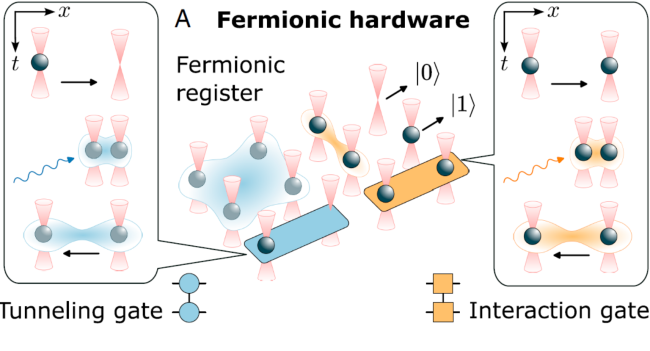Fermionic quantum processing with programmable neutral atom arrays
| Author | |
|---|---|
| Abstract |
Simulating the properties of many-body fermionic systems is an outstanding computational challenge relevant to material science, quantum chemistry, and particle physics.-5.4pc]Please note that the spelling of the following author names in the manuscript differs from the spelling provided in the article metadata: D. González-Cuadra, D. Bluvstein, M. Kalinowski, R. Kaubruegger, N. Maskara, P. Naldesi, T. V. Zache, A. M. Kaufman, M. D. Lukin, H. Pichler, B. Vermersch, Jun Ye, and P. Zoller. The spelling provided in the manuscript has been retained; please confirm. |
| Year of Publication |
2023
|
| Date Published |
2023-08
|
| Journal Title |
Proceedings of the National Academy of Sciences
|
| Volume |
120
|
| Issue |
35
|
| Start Page or Article ID |
e2304294120
|
| ISSN Number |
0027-8424, 1091-6490
|
| DOI | |
| Download citation | |
| JILA PI | |
| Associated Institutes | |
Journal Article
|
|
| JILA Topics | |
| Publication Status | |
| Publication Image |

|


 The Physics Frontiers Centers (PFC) program supports university-based centers and institutes where the collective efforts of a larger group of individuals can enable transformational advances in the most promising research areas. The program is designed to foster major breakthroughs at the intellectual frontiers of physics by providing needed resources such as combinations of talents, skills, disciplines, and/or specialized infrastructure, not usually available to individual investigators or small groups, in an environment in which the collective efforts of the larger group can be shown to be seminal to promoting significant progress in the science and the education of students. PFCs also include creative, substantive activities aimed at enhancing education, broadening participation of traditionally underrepresented groups, and outreach to the scientific community and general public.
The Physics Frontiers Centers (PFC) program supports university-based centers and institutes where the collective efforts of a larger group of individuals can enable transformational advances in the most promising research areas. The program is designed to foster major breakthroughs at the intellectual frontiers of physics by providing needed resources such as combinations of talents, skills, disciplines, and/or specialized infrastructure, not usually available to individual investigators or small groups, in an environment in which the collective efforts of the larger group can be shown to be seminal to promoting significant progress in the science and the education of students. PFCs also include creative, substantive activities aimed at enhancing education, broadening participation of traditionally underrepresented groups, and outreach to the scientific community and general public.